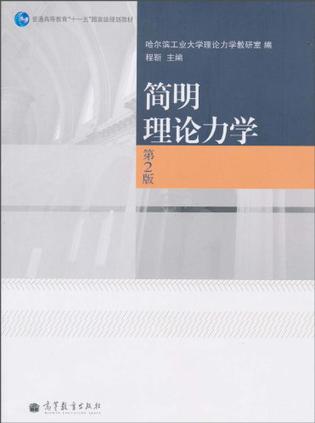
当前课程知识点:Petrophysics > Chapter 1 PROPERTIES OF RESERVOIR FLUIDS > Section 2 SOLUTION AND SEPARATION PROCESS IN A GAS-OIL SYSTEM > 1-2-7 Separation of gas from oil
-0.2 Status of oil and gas resources
-Introduction
-Section 1 PHASE BEHAVIOR OF HYDROCARBON SYSTEM
--1-1-1 chemical composition of petroleum
--1-1-2 commercial properties and classification of petroleum
--1-1-3 basic concepts of phase behavior 1
--1-1-4 Basic concepts of phase behavior 2
--1-1-5 Phase behavior of one-component system
--1-1-6 phase behavior of two-component system 1
--1-1-7 Phase behavior of two-component system 2
--1-1-8 Phase behavior of multi-component system
--1-1-9 Application of phase diagram
--1-1-10 Phase diagram of typical oil gas reservoirs
-Section 2 SOLUTION AND SEPARATION PROCESS IN A GAS-OIL SYSTEM
--Chap 1.2 PPT of Petrophysics
--1-2-1 Solubility of gas in oil
--1-2-2 Derivation of equilibrium equations
--1-2-3 Application of equilibrium equations
--1-2-4 Equilibrium constant for ideal solution
--1-2-5 Example of equilibrium constant calculation
--1-2-6 Equilibrium constant for real solution
--1-2-7 Separation of gas from oil
-Section 3 PROPERTIES OF NATURAL GAS
--Chap 1.3 PPT of Petrophysics
--1-3-1 Composition of natural gas
--1-3-2 Apparent molecular weight of natural gas
--1-3-5 Determination of Z factor 1
--1-3-6 Determination of Z factor 2
--1-3-7 The coefficient of isothermal compressibility of gas
--1-3-8 Gas formation volume factor and expansion factor
--1-3-9 Viscosity of natural gas
-Section 4 PROPERTIES OF CRUDE OILS
--Chap 1.4 PPT of Petrophysics
--1-4-1 Solution gas-oil ratio
--1-4-2 Formation volume factor and shrinkage factor of oil
--1-4-3 Two-phase formation volume factor
--1-4-4 Crude oil density and specific gravity
--1-4-5 Coefficient of isothermal compressibility of crude oil
--1-4-7 Oil viscosity measurement
-Section 5 PROPERTIES OF OILFIELD WATER
--Chap 1.5 PPT of Petrophysics
--1-5-2 Composition of formation water
--1-5-3 Classification of formation water
--1-5-4 Solution gas-water ratio
--1-5-5 Formation volume factor of formation water
--1-5-6 Coefficient of isothermal compressibility
-Exercises for Chapter 1
-Introduction
-Section 1 PROPERTIES OF ROCK MATRIX
--2-1-1 Granulametric composition
--2-1-2 Presentation of granulametric composition
--2-1-3 Evaluation of heterogeneity of sand grains
--2-1-5 Factors affecting specific surface area
--2-1-6 Measurement of specific surface area
-Section 2 POROSITY OF RESERVOIR ROCKS
--2-2-1 Classification of pores
--2-2-4 Factors affecting porosity
--2-2-5 Determination of porosity
--2-2-6 Determination of porosity 2
--2-2-7 Compressibility of porous rocks
-Section 3 PERMEABILITY OF RESERVOIR ROCKS
--2-3-6 Factors affecting permeability 1
--2-3-7 Factors affecting permeability 2
--2-3-8 Evaluation of permeability
--2-3-9 Measurement of permeability
--2-3-10 Average permeability for parallel layers
--2-3-11 Average permeability for series layers
--2-3-12 Evaluation of heterogeneity of permeability
-Section 4 FLUID SATURATION
--2-4-2 Interstitial water and residual oil
--2-4-3 Factors affecting connate water saturation
--2-4-6 Determination of fluid saturation 1
--2-4-7 Determination of fluid saturation 2
-Section 5 CEMENTING MATERIALS AND TYPES OF CEMENTATION IN RESERVOIR ROCKS
-Exercises for chapter 2
-Section 2.7 Other properties of reservoir rocks
-Introduction
-Section 1 INTERFACIAL TENSION
-Section 2 WETTABILITY OF A SOLID AND DISTRIBUTION OF OIL AND WATER IN PORES
--3-2-1 Wettability and contact angle
--3-2-3 Factors affecting the wettability of reservoir rocks
--3-2-4 Fluid distribution in pores of reservoir rocks 1
--3-2-5 Fluid distribution in pores of reservoir rocks 2
-Section 3 CAPILLARY PRESSURE
--3-3-2 Capillary pressure equation
--3-3-3 Application of capillary pressure equation
--3-3-5 Measurement of capillary pressure
--3-3-6 Mercury injection menthod
--3-3-7 Semi-permeable diaphragm method
--3-3-8 Converting capillary data
--3-3-9 Interpretation of capillary pressure
--3-3-10 Application of capillary pressure curve
--3-3-11 Determine the rock wettability
--3-3-12 Determine the fluid distribution in transition zone
-Section 4 RELATIVE PERMEABILITY
--3-4-2 Effective permeability
--3-4-4 Two-phase relative permeability curve
--3-4-5 Factors effecting relative permeability curve
--3-4-6 Estimate the oil recovery factor
--3-4-7 Calculate the water cut
--3-4-8 Determine the transition zone 1
--3-4-9 Determine the transition zone 2
-Exercises for Chapter3
-Section 1 OIL RECOVERY AND ITS AFFECTING FACTORS
--4-1-2 Primary, Secondary and Tertiary oil recovery
--4-1-5 Factors affecting oil recovery
-Section 2 ENHANCED RECOVERY METHODS

